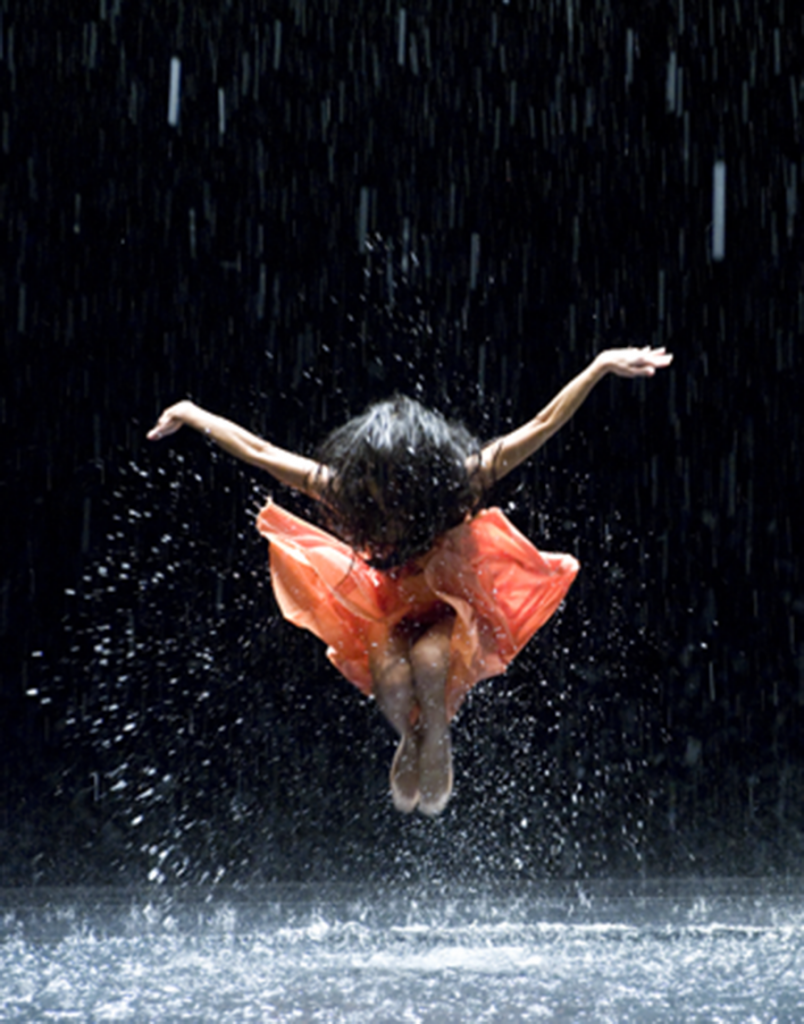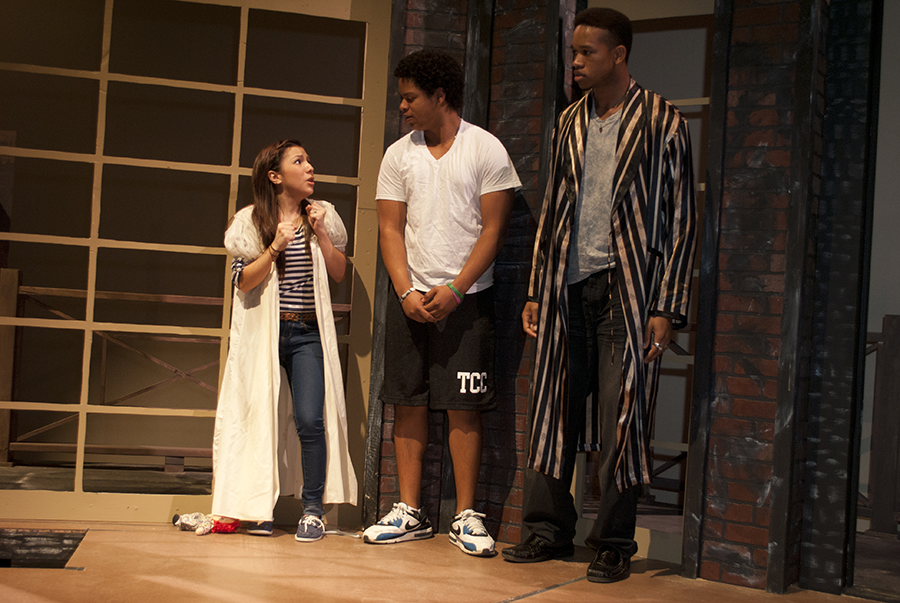By Kelli Henderson/entertainment editor

Photos by David Reid/The Collegian
Jurni Rising, an art exhibit, is the unfinished story of a girl, Jerusala, clutched from a tragic slaying of her people and reborn with the ability to see the supernatural.
Her guardian and avenger, Jurni, fights the ultimate evil, Naja. Through printmaking, drawing and painting, their ongoing story is told.
TR will host Dallas artist Nicholas Parker’s Jurni Risingin the East Fork Gallery through March 9. Parker teaches art appreciation and studio drawing classes at Wade College in Dallas and Cedar Valley

Photos by David Reid/The Collegian
College in Lancaster. Even though he has tried to do other things in his life, he could never seem to get away from art, he said. So he embraced it.
His work for Jurni Rising draws heavily from spiritual and religious readings. It revolves around the second chapter of Revelation and the ancient Japanese manuscripts of Nihongo, which talk about Shintoism, Parker said.
“[Shintoism describes] this group of monks who got together and they shut themselves out [from the world] for about three years. It might have been less,” Parker said. “They came up with all these stories that became the backbone of Japanese mythology.”
This Asian influence is very clear in his work. With five floor-to-ceiling scrolls and a variety of canvas wall hangings, Parker created a story with a unique variation of storytelling. The pieces in the exhibition with blue tints, like “Deicide,” were the first ones produced. Simple blue Bic pens were used. On the lithographs with the green tint, like “Siah Theophany: Resurrection Form,” oil and acrylic were used for the printings on stone, he said.
“Ultimately, I would like this to be in graphic novel form, [but] I really like the idea of having them in a gallery space and telling them that way — through paintings, through prints, through drawings,” he said.
The story of Jurni and Jerusala starts with Jerusala lying in a mass grave of her slaughtered people. As she is dying, she sees two spirits fighting over her soul. Jurni, a spirit and her guardian, comes to save her from the two haunting spirits. By saving her, Jurni and the creator and sustainer of the world, Shekinah, deem her the chosen vessel, and she is reborn.
Every piece intertwines some form of spirituality, even the language painted on the scrolls, called the language of angels. The pieces also deal with heavier issues in the world like abortion, death and religious hatred, Parker said.

Photos by David Reid/The Collegian
“I think all around us, at any given moment, are angels and demons … [Jurni Rising] talks about death. It has a strong reference to the Holocaust,” he said. “I like to think that behind every human experience or event, [there is one that] happens on the backdrop of this other spiritual reality we can’t see.”
Each piece shows symbolism of the real world and the hardships that humans have faced. The events are captured by Parker with a delicate swirl of details and colors. He said he has tried to capture the hardships and seriousness of life with the appeal of cartoons.
“I think my work appeals to the college-age group because if you look at it, it’s very graphic, very much like anime or manga. I feel like I can use that language to talk about serious things because the story itself points out to something a lot larger,” he said. “I want to talk about spiritual warfare. I want to talk about God. I want to talk about Christ in a way that’s imaginative, not in your face.”
TR student Olinda Barbosa said she was drawn to Jurni Risingbecause the pieces looked different than exhibits she had seen before. After having taken art appreciation last semester, Barbosa said she

Photos by David Reid/The Collegian
knows art is not as easy as it looks, and she enjoyed the variety Parker presented.
“Most artists make you feel happy, and he brought sadness, anger. It was really different, and I thought it was really cool that he could bring that kind of emotion,” she said.
Barbosa said she was inspired by Parker’s work.
“What he did, there aren’t many people I know that can create that kind of stuff. It shows that you can go beyond to be able do something,” she said.
TR student Roberto Villa said he was pulled into the art by his curiosity. Once he saw the pieces, he was blown away, he said.
“It got my attention. I liked the designs, the way he made [the art],” he said. “I kind of want to draw like him.”

Photos by David Reid/The Collegian
Each piece is intertwined and connected in some way. As with every story, many characters appear in different scenes. The same occurs with Jurni Rising. The audience sees many of the same faces in the prints and drawings that make it easier for the viewer to understand what is going on. Many of the pieces have subtle details that give the pieces big meanings and can give the audience insight into the piece, if the details are caught.
In “Jerusala Scroll,” a portrait of Jerusala, the background of the scroll is painted a royal blue with the language of the angels painted in a golden yellow. If one looks at another portrait called “Jurni Scroll,” the entire background of the scroll is the same golden yellow with a blue handprint in the bottom right corner. Details like these make the creations and the story stand out. Parker intertwines the pieces with his version of foreshadowing.
“It’s like some of the pieces are talking back and forth,” he said. “They’re having this sort of conversation, and I feel like if the audience can catch that, then they can enjoy the work that much more.”


























